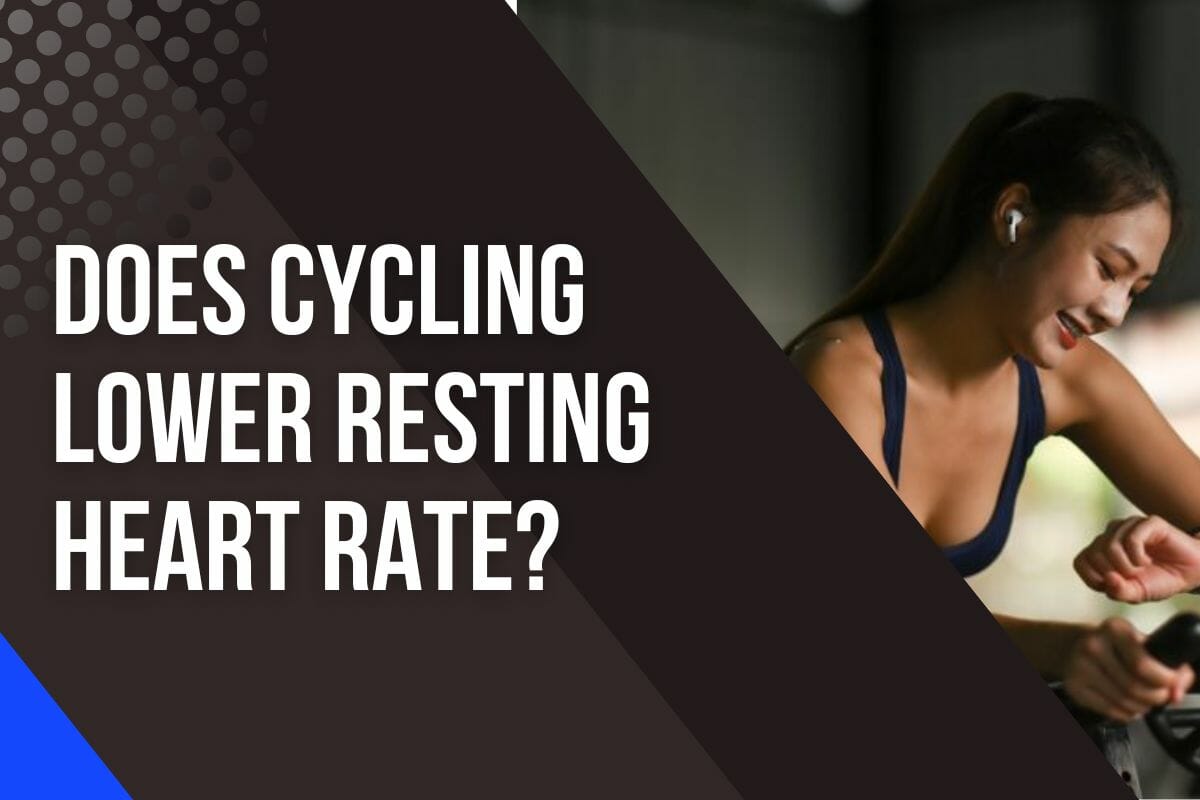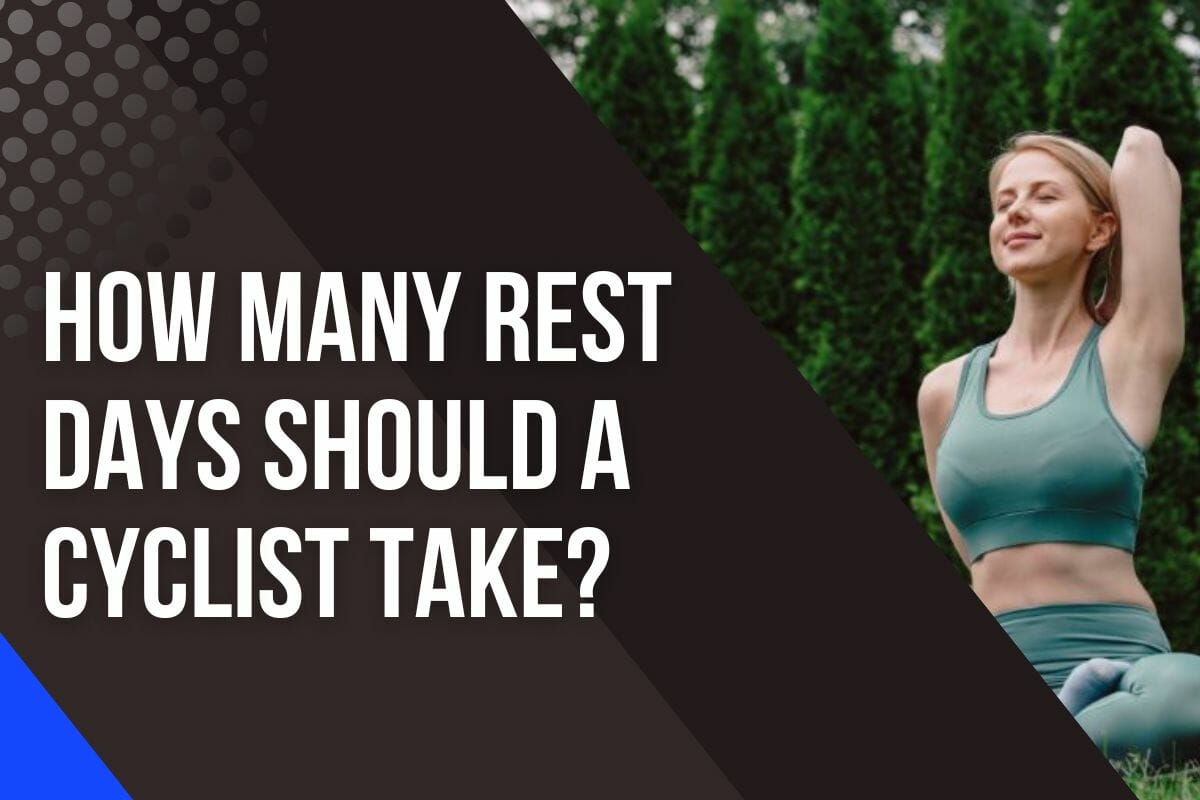Does Cycling Lower Resting Heart Rate? (Good or Bad?)

Cycling is a popular form of exercise that can help build strength and endurance, but did you know it may also help lower your resting heart rate?
But what does this mean for athletes and why is it important to understand how cycling impacts our bodies?
Read on to learn more about how cycling lowers your resting heart rate and what benefits and risks this could pose.
The Normal Resting Heart Rate
Your resting heart rate is the number of times your heart beats per minute while you are at rest.
It’s a vital sign that can give insights into your overall cardiovascular health and fitness level.
Usually, the lower your resting heart rate, the healthier you are as you have more efficient and better cardiovascular fitness.
According to Edward R. Laskowski, M.D., the normal resting heart rate for adults ranges from 60 to 100 beats per minute. (1, 2)

What Causes Low Resting Heart Rate
I’ve been cycling for so many years and I noticed something strange: my resting heart rate was lower than average.
After consulting with my doctor, I learned that this is a common experience among cyclists, especially those who have been cycling for years.
It turns out that the physical activity of cycling has many positive effects on the cardiovascular system and can lead to a decrease in resting heart rate.
According to Harvard University, the reason behind this is simple: exercise strengthens the heart muscle, grow more blood vessels, and increases blood flow and oxygen throughout the body. (3)
Over time, the strengthening of the heart leads to an increase in efficiency which in turn leads to a decrease in resting heart rate.

Cycling is an incredibly effective form of aerobic exercise that can help improve overall cardiovascular health and fitness level.
Not only does it help improve your resting heart rate but it also helps you build endurance and strength so you can stay active for longer periods of time without becoming exhausted or fatigued quickly.
Cycling is also great for your mental health and helps reduce stress level.
Getting outside into nature and enjoying some peaceful moments away from our screens can be great for reducing stress levels as well as improving moods.
Importance Of Resting Heart Rate For Athletes
When it comes to athletes, understanding how the heart works is essential for performance.
Low resting heart rate (RHR) can be an indicator of improved cardiovascular health and conditioning.
But why does a lower RHR matter for athletes?
Athletes with low RHRs can operate more efficiently while exercising by pumping out more blood and delivering oxygen throughout their bodies faster than those with higher rates.
It means you’re pumping more oxygen and nutrients to the muscles with every heartbeat.
This allows you to engage in prolonged periods of exercise without needing as much rest or recovery time between activities.
Lowering one’s resting heart rate doesn’t just happen overnight; rather, it takes dedication and consistency over time.

Cyclists have long known that regular aerobic exercises like cycling help reduce RHR through increased lung capacity and better circulation overall.
As a result, they experience fewer pauses in breathing patterns when doing intense exercises or competing professionally which gives them an edge on the competition both physically and mentally.
It’s clear that having a lower resting heart rate matters for athletes since it serves as an indication of good cardiovascular health and well-conditioned muscles for optimal performance.
Potential Drawbacks Of Low Resting Heart Rate
Having a low resting heart rate is great when it comes to physical performance, but sometimes it can have some downsides too.
When I first started cycling and my resting heart rate dropped significantly, I was surprised at how much of an impact it had on everyday life.
People would often comment on how slow my pulse was and sometimes even ask if I was alright.
Doctors would also be taken aback by the low readings they saw on the monitor and express their concerns.

While optimal health generally supports a low pulse rate, an athlete’s extremely low heart rate in the 40s or 50s can be concerning if that individual happens to end up in the emergency room or needs to have an operation.
In this case, inexperienced medical personnel may assume something far more ominous and give the patient a booster injection at the risk of potential harm.
It’s also important to put your resting heart rate in your health insurance info so medical personnel can refer to it.
So, Can You Lower Your Resting Heart Rate?
There are many factors that naturally contribute to a person’s resting heart rate, including age, gender, and health factors, improving fitness is the primary method for its regulation.
Cycling has been known to have a number of benefits, including lowering resting heart rate.
But there are other ways to lower your resting heart rate as well.
Exercising regularly is one way to do so, and can be done through any form of aerobic exercise or strength training.
Doing aerobic activities such as running or cycling increases cardiorespiratory stimulation, thereby improving efficiency and therefore reducing how quickly the heart has to beat to support exertion at rest.

Beyond that, making changes in diet such as reducing the intake of saturated fats and increasing fruits and vegetables can help lower your resting heart rate too.
Regular stress management techniques such as meditation and yoga also help reduce tension which can contribute to an elevated heart rate.
Taking into account all these options together will provide you with a comprehensive plan tailored specifically to meet your individual needs in order to effectively lower your resting heart rate.
Final Thoughts
There is no definitive “ideal” heart rate since everyone is unique.
Athletic individuals tend to have lower RHRs because they are strengthening their cardiovascular system through consistent strenuous exercise.
As the heart muscle pumps blood more efficiently, the restful state of the body results in reduced cardiac output and subsequently a lower RHR.
Generally speaking, a low RHR is not necessarily an indication of any health issue.
However, certain symptoms such as fainting, dizziness, or weakness should be further investigated by a doctor if they persist.
In conclusion, having knowledge of one’s resting heart rate can be vital for understanding personal health trends and recognizing potential dangers that may arise from erratic changes in cardiac output.





